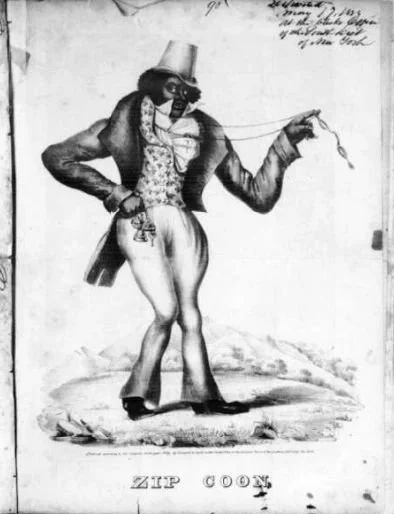TURKEY IN THE STRAW
June 17, 2019
by Valerie Diaz Leroy
The song “Turkey in the Straw” brings me back to my childhood. Growing up in Massachusetts, I didn’t know I was listening to a tune called “Turkey in the Straw.” When I was young, this melody used to excite me because it announced that the ice cream truck was headed our way and at that time the music had a positive association. “Turkey in the Straw” was first used in a cartoon in “Steamboat Willie,” one of Mickey Mouse’s first appearances. You will find this melody used in a 1983 ad for Murphy’s Oil soap, as a prominent role in a Bugs Bunny cartoon, as the theme song for a professional wrestler, and in a number of video games. Sadly, this song has been a part of American popular culture for a long time.
“Turkey in the Straw” is one of the many variants that scholars believe is derived from The Rose Tree, a song that is of British origin. Natchez Under the Hill, Jolly Miller, and Sugar in the Gourd are other popular tunes that follow similar melodic phrasing (Jabbour, p. 30). The Jolly Miller, or The Miller of Dee, is also widely used in elementary music classrooms as a play party. This piece comes from Isaac Bickerstaff’s “Love in a Village,” a comic opera initially performed in 1762.
First appearing in 1861, “Turkey in the Straw” has different origins and is nearly identical to “Zip Coon,” which first appeared in print in 1834 (Jabbour, p. 31).
Brigg’s Banjo Instructor 1855 courtesy of Tim Twiss
The Zip Coon is a character born in the tradition of blackface minstrelsy. Minstrel performers claimed to be the authentic connection between African Americans and the performers’ audiences. They passed themselves off as authorities on black culture and presented content on the stage as true culture-bearers. We know, however, that the characters they created were gross misrepresentations of African Americans, meant to deride and reinforce dangerous stereotypes. While some characters on the stage were lazy or violent, the Zip Coon was portrayed as the “larned skolar” (Hans Nathan, p. 59). Later referred to as “Jim Dandy,” the zip Coon wore pantaloons, a silk hat, and a “blue coat with long swishing tails” (Hans Nathan, p. 57).
Today, “Turkey in the Straw” serves as a reminder of how wrong it was to allow the racist institution of blackface minstrelsy become one of America's most popular forms of entertainment. The original lyrics have been altered, but the meaning remains the same.
There are many other variants of “The Rose Tree” that can be used to extract the same musical concepts we want our students to learn and understand. Using musical content becomes problematic when we sing and play specific variants that are associated with racist and derogatory intent. With a little time and research, we can collect appropriate music that will honor the heritage of children who have placed their trust in us.
Nathan, Hans. (1962) Dan Emmett and the Rise of Negro Minstrelsy. Norman ,OK :University of Oklahoma Press.
Tim Twiss
Variants of The Rose Tree
https://blogs.loc.gov/folklife/2014/05/turkey-in-the-straw/
Fiddle Tune Variants
https://www.loc.gov/folklife/LP/AmFiddleTunesLiner_opt.pdf?loclr=blogflt
The Jolly Miller
SongFacts
https://www.songfacts.com/facts/traditional/turkey-in-the-straw
Steamboat Willie
https://www.youtube.com/watch?v=BBgghnQF6E4
Bugs Bunny
https://www.youtube.com/watch?v=zwe_MgN9dGc
NPR Ice Cream Song
Medium
https://medium.com/@luckypeach/turkey-in-the-straw-a6aa3a1b2ebb
Folk Song Index
http://www.stephengriffith.com/folksongindex/turkey-in-the-straw/
Ferris State University-Jim Crow Museum of Racist Memorabilia
https://www.ferris.edu/HTMLS/news/jimcrow/question/2018/may.htm
The Gobbledy Gooker WWE

